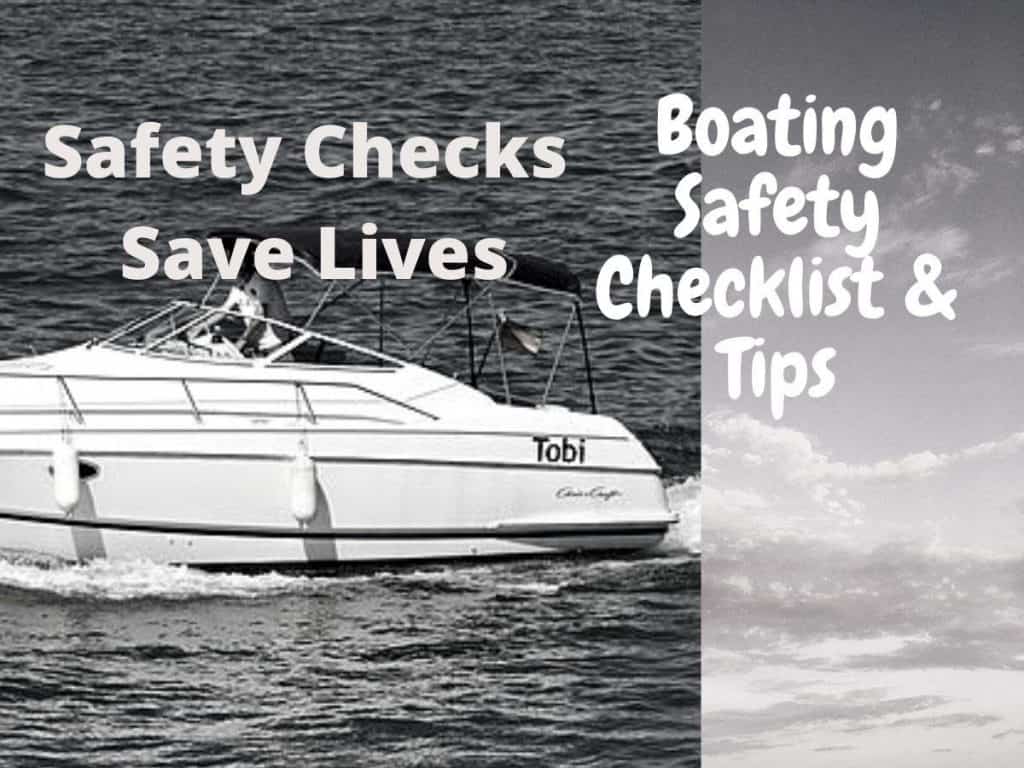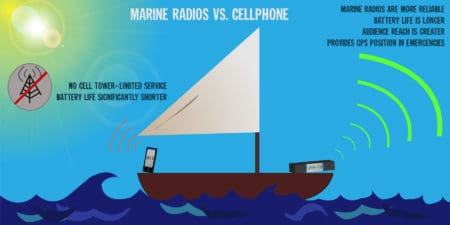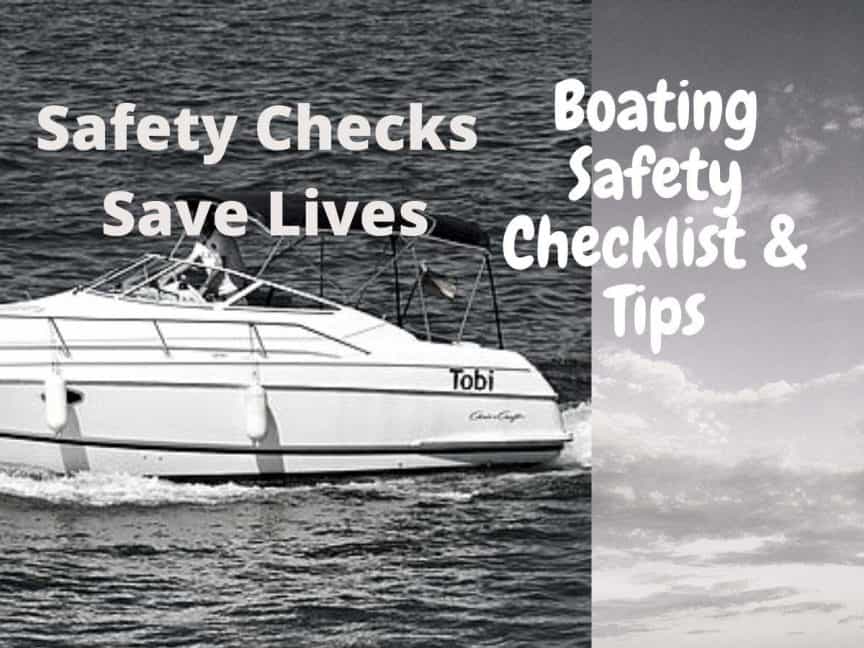Whether you are a first-time boat owner, operator, or passenger, before setting sail from the dock, you need to have basic boating safety knowledge. Our boating safety tips will provide you with that particular knowledge.
Why it’s so important? For starters, it helps to ensure that you (boat operator or owner) and your passengers remain safe when in open waters. Secondly, having basic boating safety knowledge helps to ensure that you are able to handle any emergency when on the boat. Lastly, as the boat owner or operator, you will be operating within the law.

Basic boating safety knowledge equips you with the necessary knowledge pertaining to safety equipment, alcohol use, and navigation. By increasing safety boating knowledge among recreational and professional boat users, the waterways will be safer for everyone.
Want to know more? Here are the top six boating safety tips:
Top Boating Safety Tips You Need To Know About
(1) Crew And Passengers Should Always Wear A Life Jacket
Life jackets are designed to prevent you from drowning in case you fell overboard when in a boat yet many people go thinking they are safe. What you need to know is that the first life jackets were made of cork but thanks to improved design and technology, inflatable life jackets were made. They were less bulky and much lighter thus effective in their work.
Today, life jackets are vital safety equipment that should be present in a canoe, kayak, fishing boat, or yacht. There are several reasons why you should wear an appropriate life jacket. They include:
- Keeping you alive
- Keeping you warm when in the water
- Helps to turn your body in the right position
Before putting on a life jacket, there are a few things you need to know:
l Test the life jacket to ensure that it fits snugly to your body. To do so, zip the life jacket fully plus the straps. A loose life jacket defeats the purpose of safety.
l Make sure that it’s visible to others. Available colors include yellow, lime green, and orange. The bright color makes it easy for you to be noticed from the air or water by other boats.
l Avoid taking off the life jacket even when it’s too hot. You never know when an emergency may occur.
l Always inspect the life jacket before putting it on. Inspect it for signs of excessive wear. Start by checking the webbing and stitching. If any part of the stitching is loose, opt for another one. By ensuring that the life jacket is in serviceable condition, your safety will be assured when on the boat.
In short, choose and wear adequate boat shoes, life jackets, good clothing, helmets, etc. to remain safe.
(2) Don’t Mix Boating With Alcohol
Alcohol remains one of the largest contributors to fatal boat accidents. According to the US Coast Guard, 15% of deaths that happen as a result of boating accidents are brought about by alcohol use. It was also found out that 77% of deaths occurred as a result of lack of boating safety instruction among the boat operators.
That is not all. 13% of deaths occurred where the boat operator did not have a nationally approved boating safety education certificate.
Think about it. If the boat operators had received their boating safety instruction and education training, they would have been aware of the fact that boating and alcohol don’t mix. Want to know how alcohol affects boat operators?
For starters, balance on a boat is very crucial. If the boat is not steady, chances are passengers and the crew may fall overboard. This may result in drowning if no one has a life jacket on.
Secondly, alcohol impairs one’s judgment. It achieves this by reducing the operator’s inhibitions resulting in one performing stunts instead of operating the boat safely.
Lastly, it slows the reaction time of the boat operator. Alcohol has been found to diminish one’s ability to react effectively when faced with danger. For instance, it may be difficult for you to make the right call when it comes to distance.
For objects that are far away from a normal person, they may appear very close to a drunken boat operator. By the time the boat operator realizes, it will too late. In addition, it lowers one’s night vision making it difficult for boat operators to differentiate between red and green.
To prevent all the above issues, avoid alcohol before and when on the boat.
(3) Test The Radio Communication Equipment

Before setting sail, it is important to take time and ensure that your radio equipment works. Whether it’s a VHF marine radio, an MF/HF radiotelephone, or mobile satellite telephone, you need to ensure its working before setting sail. Why?
- Allows you to monitor distress frequencies
- Enables you to contact other ships
- Allows you to contact shore-based stations in order to coordinate a rescue
- Keeps you up-to-date with navigational safety warnings and weather-related information
The first thing you need to do is perform the standard voltage test. Start by checking for any voltage drop. This has the potential of robbing your VHF radio equipment of performance. Use a voltmeter for this test. The modern high-quality marine stereos also could be useful for communication.
Next, test the performance of the antenna. Starts by checking for any cracks which have been found to promote water intrusion. Check for crushed sections or sharp bends since they can lower transmission power.
Perform a radio check with the closest base station or boat. For this to be effective, position your boat a reasonable distance from the other boat or base station. During this test, check for the radio’s three operating functions namely:
- Reception
- Transmission
- Modulation
Avoid requesting radio checks on Channel 16.
To select the best marine VHF radio suitable for your particular vessel, have a look at our post.
(4) Take Your Passengers Through All Safety Procedures
If your passengers were asked to point out where the fire extinguishers are located or how they can evacuate the boat safely in case of an emergency, they would probably give you a clueless look. Why? A vast majority of boat passengers’ especially first-timers don’t know anything about boat safety. All they are looking forward to is a great experience since the weather is clear and bright.
The first thing your boat passengers should be educated on is how to use a life jacket. They should know how to zip the jacket and cinch the straps. Don’t forget to teach them how to inspect a life jacket properly.
Next, you should inform them where the fire extinguishers are and how to use them. This will come in handy in case of a fire. If the boat is large as a cruise ship, have the fire extinguishers positioned along the passageways. You should also have a floor map detailing how the passageways are interconnected.
Teach your boat passengers the proper procedure of evacuating the boat in case there is an emergency. Even though the odds of being trapped on a boat are minimal thanks to improved technology and safety measures, the knowledge will come in handy later.
If you have a dog onboard, use life jackets for dogs. Also, try to keep a dog water ramp keeping in mind the ease of evacuation.
(5) Monitor The Weather Forecast
Keeping an eye on the weather forecast before setting sail from the dock is very important. Weather changes rapidly when on water. Unlike on land where you might find shelter in a building, on water, you are exposed to the giant rolling waves crashing on the side of the boat.
To be in the know, check your local weather reports. National Oceanic and Atmospheric Administration experts work round the clock to collect data and relay it to boat operators and others. As a boat operator, tune in to your VHF FM radio or your TV. You also have the option of checking on weather reports online.
Doing so will ensure that you know what lies ahead for the next few hours. If the weather appears to be severe or the experts have predicted changes within the next few hours, as the boat operator, it’s your responsibility to ensure the safety of the boat, crew, and passengers.
Here are the four signs that NOAA uses to advise boat operators on the weather.
- Small craft advisory – meant to warn small boat users of winds of at least 18 knots plus rough wavy sea conditions
- Gale warning – warns you of strong winds ranging between 34 to 47 knots (39 -54 mph)
- Storm warning – warns you of winds ranging between 48 to 63 knots
- Hurricane warning – warns you of hurricane winds above 64 knots
Also, check for the following signs before sailing:
- Dark clouds, lightning, and fog
- Falling barometer
- Changes in wind direction and temperature
- A noticeable halo around the moon or sun
- Puffy rising clouds
(6) Get A Vessel Safety Check
The US Coast Guard provides a Vessel Safety Check at no cost. They ( US Coast Guard Auxiliary staffers) usually perform this check to determine how safe the boat is.
The check starts with the boat registration number which should be permanently attached to each side of the forward half. The characters must be in plain, vertical, and block style letters. Also, the letters should be 3 inches high and in a color, that contrasts with the color of the boat. A hyphen should separate the letters from numbers.
The next check is performed on the registration documents of the boat followed by the personal floatation devices such as life jackets. Each life jacket is checked for impact rating. The boat should have both adult and child-size life jackets.
Fire extinguishers are next. Where should we store the fire extinguishers on a boat? They should be available to resolve any condition in the following areas – inboard engines, closed living space, permanently installed fuel tanks, closed stowage compartments, and double bottom hulls.
Other sections of the boat that fall under the vessel safety check include ventilation, backfire flame arrester, navigation lights, marine sanitation device, navigation rules, state and local requirements among others.
Having a free vessel safety check carried out on your boat helps to ensure peace of mind that your boat meets all federal safety standards.
In addition, it helps to ensure that your boat is equipped with safety equipment that comes in hand during an emergency. Once your boat has passed the safety check, you will be awarded a decal. What you ought to know is that the safety check expires every year on December 31st.
You can get a free Vessel Safety Check for your personal boat by the US coast guard auxiliary.
Conclusion
Remember boating safety is your safety. Sometimes we don’t care about a small thing but it can appear as a bigger problem in a different situation. So, check everything before going out and have fun with the family, friends, and mates.
For example, if you are in a sailboat you must remember to keep a proper sailing knife for your safety and for any emergency. We must be well-educated boaters and keep an eye on the navigation buoys and markers and signals. You can make a small checklist for your particular cases. Hope our boating safety tips will help you to check the most important points.



